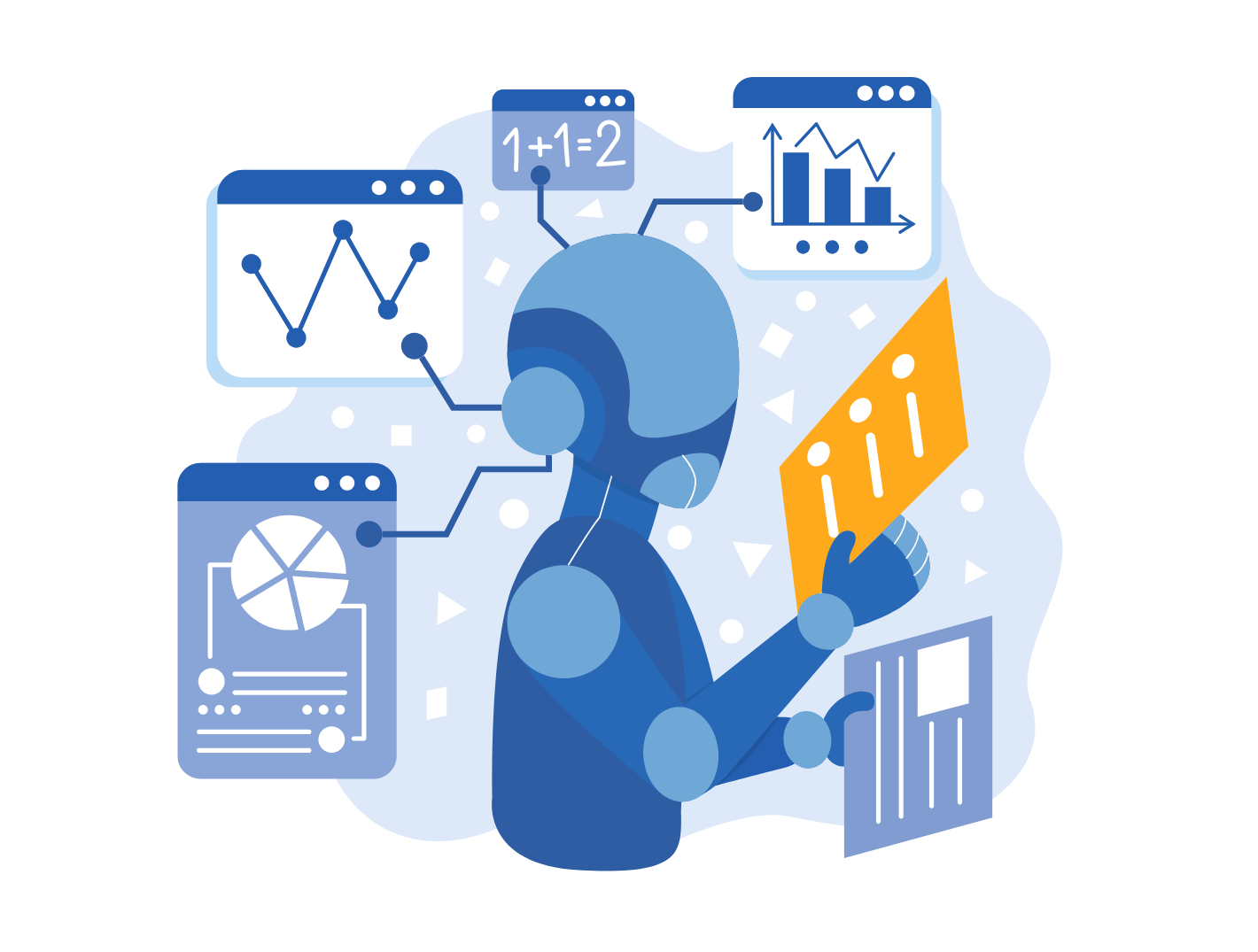Over the last two years, Generative AI has proven to be more than just a fad. As enterprise organizations move from simple, initial experimentation to extensive Large Language Model (LLM) rollouts, the use cases for adoption have created new strategic opportunities from optimizing internal machine learning deployment lifecycles. Let’s delve into the various LLM use cases ranging from simple to complex that can transcend across industries, and aim to enhance operational efficiency, customer satisfaction, and innovation.
Common Strategic Business Goals Behind LLM Integration
Traditionally, the larger the ship, the slower it is to turn. In the context of large-scale enterprise solutions, brand recognition and legacy often acted as anchors for businesses, making rapid innovation costly and less feasible to maintain at the same pace as technological evolution.
However, the ability to utilize a wide range of LLMs dramatically changes the game for enterprises across all industries that are willing to prioritize MLOps. When executed correctly, this approach can provide a solid foundation for in-house innovation, leveraging data the organization already possesses, and can lead to:
- Reduce Cost: By automating routine and complex processes, LLMs significantly cut down the need for extensive manpower, thereby reducing labor costs and operational expenses. Automation streamlines workflows, minimizes human error, and optimizes resource allocation, leading to more efficient operations and substantial cost savings.
- Expedited Time to Resolution: Internally managed LLMs gives your business the capability to provide immediate responses and solutions which dramatically reduces the time required to address customer queries and operational issues. This swift time to resolution not only enhances customer experience but also allows your business to quickly adapt to challenges and maintaining operational continuity.
- Enhanced Service Time: LLMs are adept at handling basic to moderately complex tasks without human intervention. By taking over repetitive and time-consuming tasks, they free up employees to concentrate on strategic, creative, and high-impact activities. This reallocation of resources ensures your business focuses its efforts on driving growth, innovation, and competitive advantage.
- Customer Retention: Foster a sense of loyalty through personalized interactions are key to improving customer satisfaction and loyalty. By leveraging internal, owned data to understand customer preferences and behaviors, LLMs can help create a more consistent experience across all brand interactions.
LLMs Across Industries
Embracing MLOps with the aim of integrating Large Language Models (LLMs) and advancing AI innovation is not relegated to a company size or industry. It’s a foundational tool that lays the ground work for empowering your organization to evolve, offering transformative potential to those ready to make MLOps a strategic priority. The only businesses left behind will be those hesitant to embrace this forward-thinking approach, and underscore the adaptability of MLOps as a catalyst for growth and innovation.
Here’s a closer look at examples of the impact it will have on specific industries:
Telecom: Leveraging chatbots in call centers helps to assist support agents, while greatly enhancing the accuracy and speed of customer service. These bots can quickly access customer data, provide instant solutions to common technical issues, and route calls to the appropriate human agent when necessary.
This not only improves the customer experience through faster resolutions but also reduces the workload on human agents, allowing them to focus on more complex issues and personal customer interactions.
Financial Services: This sector, and other more traditional industries, are also seeing a profound impact from AI, especially in how financial analysts utilize these technologies. LLM-driven chatbots and generative AI tools are enabling analysts to sift through vast datasets, extracting relevant financial insights and trends with unprecedented speed and accuracy.
For a financial analyst, this means they can quickly gather market data, analyze trends, and generate reports, enhancing the quality of financial insights provided to clients. By automating the data analysis process, analysts can spend more time on strategic decision-making and personalized client consultations, adding significant value to their services.
Retail: Customer service bots are not just digital assistants, but the backbone of customer interaction. These LLM-driven chatbots handle inquiries, track orders, and resolve common issues, providing a seamless shopping experience for customers.
By automating these tasks, retailers can offer 24/7 support without the need for extensive call center staff, significantly reducing wait times and improving customer satisfaction. This automation also frees up human agents to deal with more complex queries, ensuring that customers receive the best possible service at every touchpoint.
Manufacturing: Machines equipped with AI capabilities are providing instant repair instructions and maintenance guidance, significantly minimizing downtime and enhancing productivity. These LLM-based systems can diagnose issues, recommend preventive maintenance, and guide technicians through complex repair procedures, ensuring machinery and production lines are running smoothly and efficiently. This not only reduces the time and cost associated with repairs but also improves overall operational efficiency.
Navigating the Challenges of Deploying LLMs
While everyone is talking about deploying LLMs as part of the evolution of their internal MLOps, and for obvious reasons, it’s an opportunity that is also fraught with complexities that commonly include:
- Troubleshooting and Debugging: Deploying LLM-powered applications requires sophisticated diagnostic tools and methodologies to swiftly identify and rectify any arising issues, ensuring seamless operation and reliability.
- Managing Latency: Achieving the authentic chatbot experience demands rigorous optimization of inference servers to ensure minimal latency, facilitating real-time interactions that are smooth and responsive.
- GPU Serving Infrastructure Cost and Efficiency: The deployment of LLMs presents both technical and financial hurdles, given their substantial demand for computational resources. Strategic planning and optimization are crucial to balance performance with cost-effectiveness, which can be resolved with the right MLOps software, like Seldon.
- Complex Application Development: Incorporating LLM components into existing systems requires innovative solutions that enable seamless integration without the need for extensive re-architecting, preserving the integrity and functionality of current applications.
How Can Seldon Help?
Seldon has deployment at its core which, according to Forbes, only one in ten teams have been able to make deployment of LLMs a reality. Seldon’s LLM Module will serve as a foundational piece to help teams not only get LLMs into production, but will help teams monitor, optimize and innovate utilizing their own data at scale with features that will support:
- Accelerated deployment with pre-packaged runtimes which enable engineers to employ the same workflows for deploying traditional ML models and complex LLMs. This helps to standardize deployment practices and limits the need for extensive upskilling or retraining.
- Ensure compliance and reduced risk with Seldon’s focus on features that are crucial for organizations deploying ML models in regulated industries and locations with features like Alerts, Role-Based Access, Audit Logs, and enhanced monitoring. Making sure that all businesses across industries can keep up with the technology evolution easily and without getting stuck behind red tape.
- Reduce costs through features like Multi-Model Serving allows teams to run multiple models on the same infrastructure as opposed to the traditional approach of dedicating separate infrastructure for each model. By optimizing resources, businesses can achieve more with less, reducing operational costs without sacrificing performance.
No matter how you look at it, LLMs and Generative AI are no longer a nice to have but a standard practice. Seldon’s comprehensive suite of products equips teams with precisely what you need, exactly when you need it, streamlining the deployment process whether that be as an invaluable addition to your existing MLOps workflow, or with Seldon’s Enterprise Platform which democratizes access to deployed models like LLMs to facilitate their ongoing optimization and development.
Be the first to know about launch of Seldon’s LLM Module available for Core+ and Enterprise Platform customers and request a bespoke demo by signing up for our first look waitlist, here →

